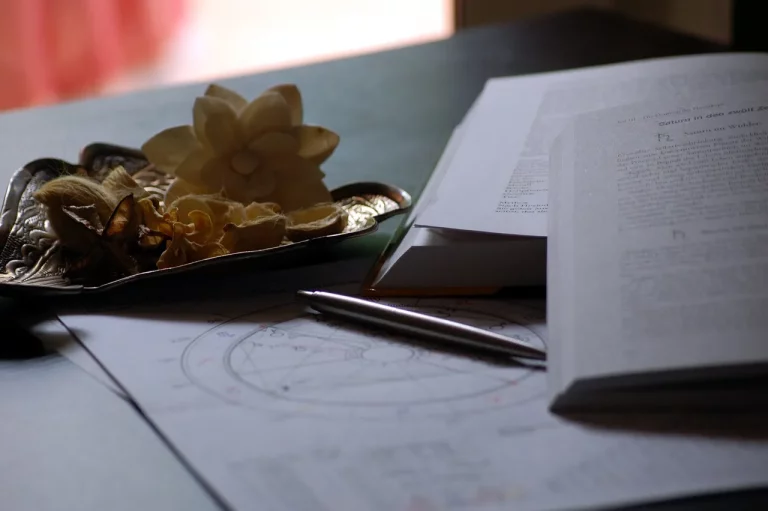Is The New York Times Independent?
The New York Times is one of the most well-known and respected newspapers in the United States and around the world. Its reputation for high-quality journalism and integrity leads many to assume it is independent and free from bias. But is that really the case? Here’s a quick answer: The New York Times is generally considered independent, though some critics argue it has a liberal bias. This article will examine the paper’s ownership, editorial processes, and coverage to help you make up your own mind.
In this approximately 3000 word article, we’ll dive into the history of the New York Times, its ownership and financial structure, its editorial processes and guidelines, analyses of its political coverage and leanings over time, and criticisms and defenses of its independence and objectivity from different perspectives. We’ll aim to provide a thorough, nuanced look at this topic to help readers evaluate the New York Times’ independence for themselves.
History and Ownership of the New York Times
Founded in 1851 with lofty goals of impartiality
The New York Times, often referred to as the “Gray Lady,” was founded in 1851 with a mission to provide unbiased, accurate, and reliable news to its readers. Its founders, Henry Jarvis Raymond and George Jones, envisioned a newspaper that would inform the public without any political bias.
From its early days, the New York Times aimed to be a trusted source of information for its readers.
Privately owned by the Ochs-Sulzberger family since 1896
In 1896, Adolph Ochs, a Tennessee publisher, acquired the New York Times and made it a family-owned enterprise. The Ochs family, and later the Sulzberger family through marriage, have maintained ownership and control of the newspaper ever since.
This long-standing ownership has allowed the New York Times to maintain its independence and editorial integrity throughout the years.
Publicly traded but Ochs-Sulzberger family maintains control
Although the New York Times went public in 1969 and is listed on the New York Stock Exchange, the Ochs-Sulzberger family has managed to retain control of the company. This unique ownership structure, with a dual-class stock system, ensures that the family maintains a majority of the voting power.
This arrangement has allowed the family to protect the newspaper’s independence and uphold its journalistic standards.
For more information on the history and ownership of the New York Times, you can visit the official website of the newspaper.
Editorial Standards and Processes
When it comes to editorial standards and processes, The New York Times takes its role as one of the leading news organizations seriously. The newspaper has a set of guidelines that prioritize accuracy and fairness in reporting.
These guidelines ensure that the stories published by The New York Times are thoroughly researched, fact-checked, and verified before they are released to the public. The aim is to provide readers with reliable and trustworthy information.
Editorial guidelines prioritize accuracy and fairness
The editorial guidelines at The New York Times are designed to maintain the highest level of journalistic integrity. They emphasize the importance of accurate and truthful reporting. Journalists are required to verify their sources and cross-check information to ensure its accuracy.
The guidelines also stress the need to present multiple viewpoints and avoid favoring any particular political or ideological position. This commitment to fairness and objectivity helps to maintain the newspaper’s reputation as an independent and reliable source of news.
Layered editing and fact-checking aim to eliminate bias
The New York Times employs a layered editing and fact-checking process to minimize bias in its reporting. Multiple editors review each article before it is published, checking for factual accuracy, clarity, and adherence to the newspaper’s editorial guidelines.
This rigorous process helps to catch any potential bias and ensures that the final article is fair, balanced, and free from any undue influence. The goal is to provide readers with a comprehensive and objective account of the news.
Public editor position acted as in-house critic and reader advocate
For many years, The New York Times had a public editor position, which served as an in-house critic and reader advocate. The public editor was responsible for addressing concerns or complaints from readers about the newspaper’s coverage.
This role acted as a check on the newspaper’s independence, ensuring that it remained accountable to its readers. Although the public editor position was discontinued in 2017, The New York Times continues to actively engage with readers through various channels, including social media and reader feedback sections, to maintain transparency and address any concerns that may arise.
Analyses of Political Coverage and Bias
Studies show left-leaning bias in language and story selection
Multiple studies have found evidence of a left-leaning bias in the language and story selection of The New York Times. These analyses suggest that the newspaper tends to use more liberal language and frame stories from a predominantly left-leaning perspective.
However, it is important to note that bias can be subjective and may vary depending on individual interpretations.
For instance, a study conducted by the Pew Research Center analyzed the political content of The New York Times and found that the newspaper used more positive language when discussing Democrats compared to Republicans.
This linguistic bias may contribute to a perception of a left-leaning bias in the newspaper’s coverage.
Another study conducted by researchers at Harvard University analyzed the newspaper’s coverage of President Trump during his first 100 days in office. The study found that the majority of the newspaper’s coverage portrayed the president in a negative light, which some argue suggests a bias against the Trump administration.
While these studies provide some evidence of a left-leaning bias in The New York Times’ political coverage, it is important to consider the newspaper’s commitment to objectivity and factual reporting.
But coverage is factual and reporters aim for objectivity
Despite the perceived bias in language and story selection, The New York Times prides itself on its commitment to factual reporting. The newspaper has a rigorous fact-checking process in place to ensure the accuracy and credibility of its coverage.
Reporters at The New York Times strive to be objective in their reporting and adhere to ethical journalism standards. They aim to present multiple perspectives on an issue and provide readers with a comprehensive understanding of the topic at hand.
However, it is important to recognize that journalists are human and can be influenced by their own biases, conscious or unconscious.
The New York Times also provides a platform for opinion pieces and editorials, which allows for a diversity of viewpoints to be represented. These opinion pieces, while not reflective of the newspaper’s overall editorial stance, contribute to a robust and nuanced discussion of political issues.
Seen as liberal by conservatives, centrist by progressives
The perception of bias in The New York Times’ political coverage varies depending on one’s political beliefs. Conservatives often view the newspaper as having a liberal bias, while progressives may see it as more centrist.
This divide in perception can be attributed to the ideological spectrum of readers and their expectations of impartiality. Individuals with conservative leanings may feel that the newspaper’s coverage does not align with their own political views, leading to a perception of bias.
On the other hand, progressives may view The New York Times as more centrist due to their own political perspectives.
It is essential to acknowledge that media outlets, including The New York Times, operate within a complex and ever-changing media landscape. The perception of bias can be influenced by individual experiences, personal beliefs, and the political climate of the time.
For more information on The New York Times’ independence and political coverage, you can visit their official website https://www.nytimes.com.
Criticisms and Defenses of NYT Independence
Critics say subtle liberal bias shows it’s not truly independent
The New York Times (NYT) has long been accused of having a subtle liberal bias that compromises its claim to independence. Critics argue that the newspaper’s reporting often favors liberal perspectives and fails to provide balanced coverage of conservative viewpoints.
They point to the selection and framing of stories, as well as the choice of sources and interviewees, as evidence of this bias. For example, some critics argue that the NYT tends to downplay or dismiss conservative ideas and policies, while giving extensive coverage to progressive causes.
However, it is important to note that bias is a complex issue and can be subjective. While some readers perceive a liberal bias in the NYT’s reporting, others may see it as a reflection of the newspaper’s commitment to objective journalism.
It is also worth mentioning that the NYT has a diverse range of journalists and contributors who come from various political backgrounds, which adds to the complexity of the issue.
Additionally, defenders of the NYT argue that the newspaper’s commitment to rigorous fact-checking, thorough research, and the inclusion of diverse perspectives helps to ensure its independence. They emphasize that while individual journalists may have their own political leanings, the overall editorial process at the NYT is designed to minimize bias and provide accurate and comprehensive reporting.
Defenders argue strict standards prevent partisan bias
Supporters of the NYT’s independence point to the newspaper’s strict editorial standards as a safeguard against partisan bias. The NYT has a well-established code of ethics that emphasizes accuracy, fairness, and impartiality.
Journalists are expected to adhere to these principles and uphold the newspaper’s commitment to delivering unbiased news coverage.
Furthermore, the NYT has implemented internal mechanisms to address concerns over potential bias. They have public editors and ombudsmen who are responsible for holding the newspaper accountable and ensuring that journalistic standards are met.
These individuals provide a critical outside perspective and help to maintain the newspaper’s integrity.
It is important to note that no news organization is completely free from bias. However, defenders of the NYT argue that the newspaper’s commitment to transparency, accountability, and adherence to ethical guidelines sets it apart from other media outlets.
They believe that these measures help to mitigate any potential bias and ensure that the NYT remains an independent and trusted source of news.
Debates reflect larger divisions over role of media
The debates surrounding the independence of the NYT reflect larger divisions over the role of media in society. In an era of increasing polarization, where people are often seeking news that aligns with their own beliefs, the concept of a truly independent and unbiased news source is often challenged.
Some argue that the NYT, like other media organizations, is influenced by commercial and political pressures, which can compromise its independence. They believe that media outlets should openly acknowledge their biases and provide transparent reporting that reflects diverse perspectives.
On the other hand, proponents of the NYT’s independence argue that the newspaper’s commitment to journalistic integrity and its efforts to provide balanced coverage are crucial in a democratic society.
They believe that a free press plays a vital role in holding power accountable and providing citizens with the information they need to make informed decisions.
Conclusion
The New York Times has maintained high journalistic standards and a strong reputation for quality reporting over many decades. While no news outlet can be perfectly objective, the Times aims to minimize bias through policies, editing, and a separation between ownership and editorial content. However, some perceive a subtle liberal lean, while critics on the left see it as too mainstream. Debates over whether the Times is truly independent reflect broader debates over media bias. By understanding its history, ownership structure, and journalistic practices, readers can better evaluate the New York Times’ independence for themselves.








